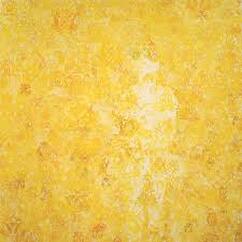|
Charlotte Perkins Gilman is best known perhaps for her short story 'The Yellow Wallpaper'. In that story, a young mother, suffering from postnatal depression, is cared for by a loving husband who is also her doctor in a quiet country house. Her husband makes sure that in order to recover, she does not exert herself, does not do anything too stimulating, such as seeing lively friends, or writing; that she rest, that she spends time with her baby (but with the help of her sister in law for any actual work involved caring for the baby). This sounds like a loving and reasonable way to treat someone who is depressed. But at the end of the story, the heroine has lost her mind, thinking that she has been taken over by a woman who'd been imprisoned inside the hideous yellow wallpaper of her bedroom. The story is seminal, in that it depicts clearly and painfully, a malaise that Betty Friedan would later call the 'problem with no name'. Neither the heroine nor her husband are able to articulate what it feels to be her, as a woman suffering from depression – specifically postnatal depression -, and they're stuck with some very unsatisfatory and harmful prejudices, that she needs rest and inactivity, mental and physical, that she will be fulfilled by motherhood, and that she doesn't need anything else in life. Perkins Gilman, when she penned that story, was writing from experience. She too had suffered from post-natal depression, and she too had been advised to rest and spend time with her child in order to get better. Perkins Gilman had in fact visited a famous physician Dr Silas Weir Mitchell, a pioneer of neurology who specialized, among other things, in the treatment of 'hysterical women'. His mission, when treating discounted women was to help become ‘more loving, giving, gentle with her family, and more peacefully content with herself’ through overfeeding and oversleeping. (Mary A. Hill: Charlotte Perkins Gilman: The Making of a Radical Feminist 1860-1896. Temple University Press, Philadelphia 1980, p.148) Perkins Gilman took Weir Mitchell’s rest cure, and of course hated it. Most of her difficulties with motherhood, on top of the hormonal issues that most sufferers of postnatal depression have to deal with, was the fact that she had less time to do the work or the physical exercise she thrived on. Like her aunt Catharine Beecher, Perkins Gilman was a fitness freak, going to the gym daily, taking classes, and running. In an article published in the October 1913 issue of The Forerunner (14 years after the publication of the short story) "Why I wrote the Yellow Wallpaper" Perkins Gilman describes her experience with Weir Mitchell's rest cure: For many years I suffered from a severe and continuous nervous breakdown tending to melancholia -- and beyond. During about the third year of this trouble I went, in devout faith and some faint stir of hope, to a noted specialist in nervous diseases, the best known in the country. This wise man put me to bed and applied the rest cure, to which a still-good physique responded so promptly that he concluded there was nothing much the matter with me, and sent me home with solemn advice to "live as domestic a life as far as possible," to "have but two hours' intellectual life a day," and "never to touch pen, brush, or pencil again" as long as I lived. This was in 1887. I went home and obeyed those directions for some three months, and came so near the borderline of utter mental ruin that I could see over. Virginia Woolf was also prescribed the rest cure, and like Perkins Gilman, she suffered much from the requirement that she not exert herself by doing what she loved best, writing and talking. Whatever the benefits of the cure, it was clearly also designed to domesticate intelligent women and keep them within the domestic circle.
0 Comments
Leave a Reply. |
AboutThis is where I blog about my new book project (under contract with OUP): a history of the philosophy of the home and domesticity, from the perspective of women philosophers. Archives
March 2024
Categories |
Proudly powered by Weebly

 RSS Feed
RSS Feed